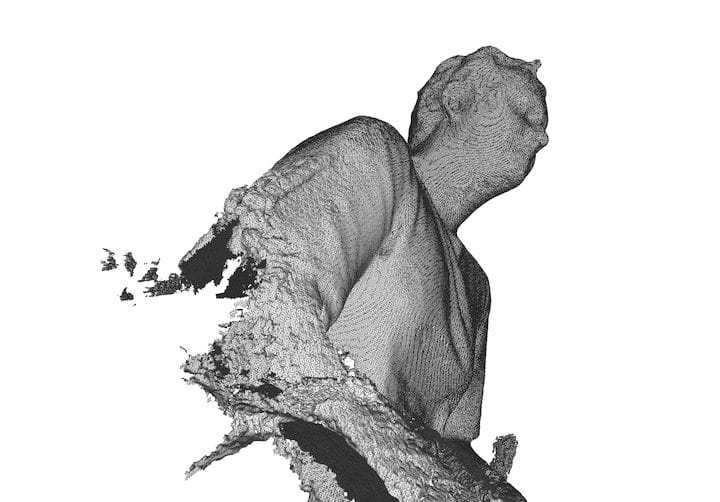![3D scans can be very rough [Source: Fabbaloo]](https://fabbaloo.com/wp-content/uploads/2020/05/image-asset_img_5eb0a307e6d18.jpg)
This week’s question comes from reader Jim Hohimer.
Hohimer asks:
“Do you know if anyone is working on placing a distance measuring laser on a 3 D printer to scan a part to allow the same machine to make the necessary drawings/software to duplicate the part?”
This is an interesting question in several aspects.
First, are there 3D printers that include scanners?
Yes, there are indeed machines of this type, although they are not frequently encountered. Some machines include a laser system that can be used to 3D scan objects retained in the machine’s build volume.
Another hardware variation could be any of several multi-tool 3D printers. These are devices that have ingenious toolhead swapping capabilities. Such machines usually have the option of using a 3D print toolhead, a laser engraving toolhead, a paste extrusion toolhead, or more. Sometimes the laser toolhead doubles as a 3D scanner, or perhaps a touch-based sensor toolhead can also perform 3D scanning.
But can these infrequently seen machines produce a proper CAD model (if that is what Hohimer seeks)?
No, it’s not really possible. While these machines could theoretically obtain a 3D scan of an object, a 3D scan is by no means a usable 3D model. It is essentially a very rough approximation of the surface of the scanned object.
It might not include fine details, and indeed even miss thin protrusions. While that rough scan just might be usable for applications requiring less fidelity, like artwork, experimentation and the like, it is entirely unsuitable for reproducing an accurate part in 3D.
If a true CAD model is required, the scan is used as a kind of guide for producing a proper CAD model. A common re-engineering practice is to import the rough scan into a CAD tool, then “trace” new CAD elements on top of it. Then once you’ve reproduced the entire object, you throw away the scan and just use the newly created 3D model.
Some who are less familiar with 3D printing concepts might see them as similar to a photocopier: if an item can be printed, then it could be copied and printed, too?
Not really. Scans are also very limited in that they cannot easily capture any discontiguous components in the object, so you get only “solid” views of the object, like a hinge that cannot be closed.
Automated reproduction of objects is really not yet a thing, and it would likely require considerable developments in 3D scanning and CAD software.
Fabbaloo periodically answers questions from the public about 3D printing and if warranted, we’ll publish the answers in a story for all to see. If you have a 3D printing question, please feel free to submit one on our contact form.











Anna Shcherbinina has been working at Artec 3D for nine years.